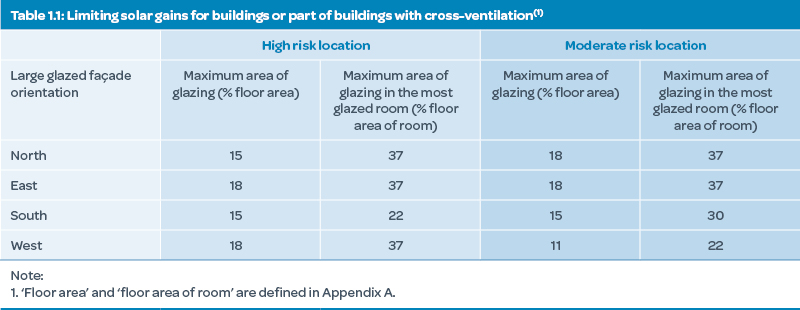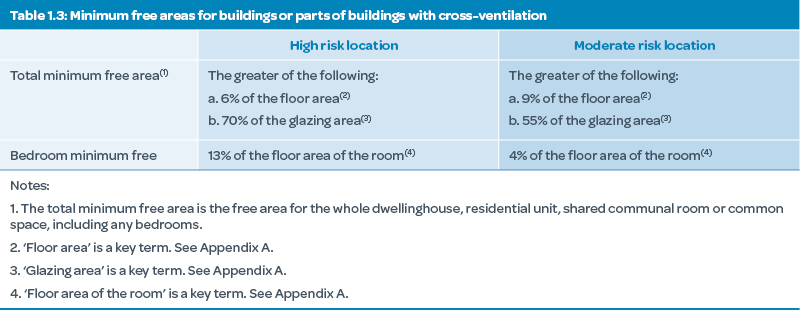Comment
O is for overheating
The Future Homes Standard’s new Building Regulations continues to pave the way for net-zero buildings and homes in England. Director, Barny Evans provides an update on the regulations and focuses on the significance Part O has on addressing overheating buildings.
Three new or updated Building Regulations have been announced in England this year; Part L, Part O and Part S (you wait nine years for an update and…). Similar regulations are coming in Wales and Scotland.
Parts L and S
Part L has had a fair bit of coverage, with its updated requirements around energy and CO2 emissions. A stepping-stone to an all-electric future. Read my summary on the Part L regulations here.
Part S deals with the requirement for electric vehicle (EV) charging. It requires that each home with allocated parking has an EV charger provided. I support the need for EV charging, my fear here is we lock-in the need for driveways and car parking immediately adjacent to the property, with all the domination of streets by cars that causes.
Part O
We have been asked by quite a few clients to explain the implications of the above for their portfolios and proposed developments. Fewer have asked about the new Part O, yet its implications for new homes could be as significant as any.
Part O addresses the risk of overheating in homes. The issue has been on the agenda for a while, with a lot of evidence that the previous quasi-voluntary approach wasn’t working. This was particularly the case for flats in city centres where the combination of single aspect homes, restricted openings, solar and internal heat gains, and the urban heat island have meant that they frequently overheat causing discomfort, ill health and even increasing deaths. Our old approach, plus a reluctance to provide mechanical cooling for cost and environmental reasons, means we now have thousands of flats that are prone to overheating (before potential increases in temperatures due to climate change).
The new regulations set out to address this and provide two methods to comply; simple or dynamic thermal modelling. The simplified method uses tables to set out the maximum allowed glazed area and minimum opening window space, whilst the dynamic thermal modelling involves software packages and specialist consultants.
For the simple method, England is divided into areas of high risk; most of London and some of Manchester, and moderate risk; the rest of the country. Tables then set out the maximum glazed area on the biggest glazed façade and glazing/floor ratio thresholds. See below for buildings with cross-ventilation, taken from the Approved Document.
Part O “Simple” Method Requirements

It also sets out minimum free-areas (the openable area) for ventilation, see below for the example with cross-ventilation. For the eagle-eyed, the maximum glazing area is lower in single aspect homes because there are other requirements on shading in high risk areas.

The irony of the simple method is that it is proving to be complicated. It requires quite a lot of calculation, some interpretation and very large openable window areas. Many/most new flats and even houses will fail on the simple criteria. This means it will be necessary for most developers to undertake dynamic thermal modelling to prove the risk has been minimised.
Dynamic modelling
For those already used to overheating modelling using the TM59 method, this will be familiar. Consultants use software packages with agreed assumptions to consider a development, looking at geometry, climate, glazing, internal gains, and so on. Part O is slightly different to TM59, however. There are requirements around night-time noise and air pollution that may mean a more nuanced approach to assumptions around opening windows and it is not permissible to use internal blinds as a method to reduce solar input. Care is going to be needed.
The guidance doesn’t ban mechanical cooling but does state that homes should “…be constructed to meet requirement O1 using passive means as far as practicable.” This has been confirmed as not meeting the amended standard dynamic modelling method, (CIBSE TM59). In some challenging sites, cooling is going to be required.
I am not opposed to mechanical cooling in flats in southern British cities. Even in today’s climate overheating is common. Even with good quality modelling there are so many risks for urban flats. Very localised noise sources that aren’t picked up, security fears, more internal heat gains than modelling allows for, microclimate issues, and gaps between modelling and finished product mean the risk can still be significant even when modelling says otherwise. I could make the case for mandating cooling (after passive measures have been implemented) in all flats in southern Britain. The point is the changes to Building Regulations may do this by the backdoor.
We are already working with developers to develop standard home types and develop flat architypes that will pass in southern Britain, and particularly city centres.
I recommend all developers and investors to get on top of this now. This will have a big impact on glazing areas, glazing types, ventilation, and cooling. That in turn means lots of changes to design and costs which need to be considered.
Thank you to Susie Diamond of Inkling LLP and James Healey of AESG for their great reviews and conversation on the issue, from which I have drawn.
If you require help understanding the new regulations and how they might apply to your development, please get in touch with Barny Evans.
7 September 2022
[1] The Building Regulations 2010, Overheating Approved Document, 2021 edition